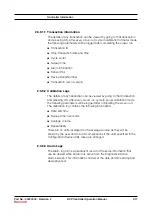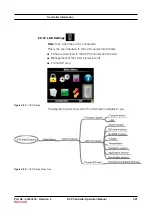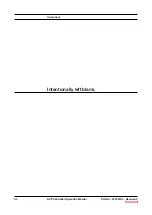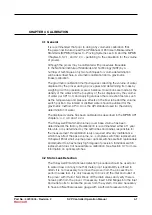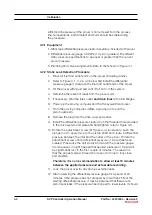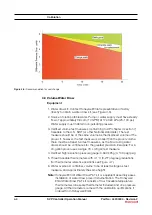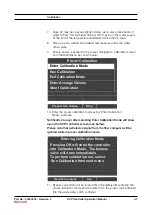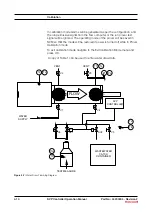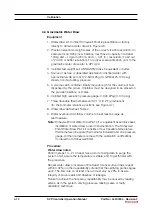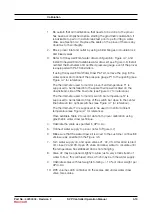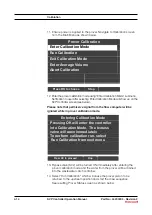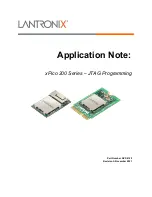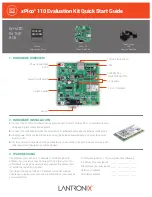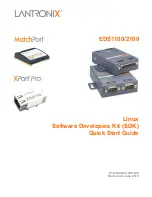
Part No.: 44200004 - Revision 2
SVP Controller Operation Manual
4-1
CHAPTER 4 CALIBRATION
4.1 General
It is recommended that prior to doing any volumetric calibration that
the personnel involved read the API Manual of Petroleum Measurement
Standards (MPMS) Chapter 3 – Proving Systems sec 3.8, and the MPMS
Chapters 3.3.7.1, and 12.2.4 – pertaining to the calculation for the volume
of provers.
Although the prover may be calibrated with procedures traceable
to the National Institute of Standards and Technology (NIST) by a
number of techniques, only two techniques for volume determination
will be described here, a volumetric calibration and a gravimetric
(mass) calibration.
The gravimetric calibration method requires collecting the volume of water
displaced by the prover during a prove pass and determining its mass by
weighing it with a precision scale or balance. Corrections are made for the
density of the water and the buoyancy of the air displaced by the volume
of water per API 14.6, and applying various other correction factors such
as the temperature and pressure effects on the flow tube and the volume
switch position. De-ionized or distilled water should be utilized for the
gravimetric method. API 4.9.4 is the API standard used for the density
determination of water.
The displaced volume has been calibrated as described in the MPMS API
chapters,: 4.2, 4.9 and 12.2.4.
The Honeywell Enraf small volume prover base volume has been
determined at the factory. Recalibration is recommended either at 1 year
intervals, or as determined by the authorities and parties responsible for
the measurement. Recalibration is also required after any maintenance
which may affect the base volume, i.e.: complete switch bar replacement.
Honeywell Enraf small volume prover optical switches are field replaceable
and adjusted to an extremely high degree of precision. Individual switch
replacement does not necessitate re-calibration. See Section 6.7 for more
information on optical switches.
4.2 Static Leak Detection
The Honeywell Enraf static leak detection procedure should be used prior
to water draw or at any time that meter proof repeatability is difficult to
attain. It is not necessary to remove the prover from the process line to
perform a leak test. It is only necessary to block off the inlet and outlet of
the prover with it full of fluid. Block off the drain valves and verify there is
no leak path from the prover. If necessary, insert blind flanges into the inlet
and outlet ports to isolate the prover from the system. It is also necessary
to have a differential pressure gauge with a sufficient pressure rating to





